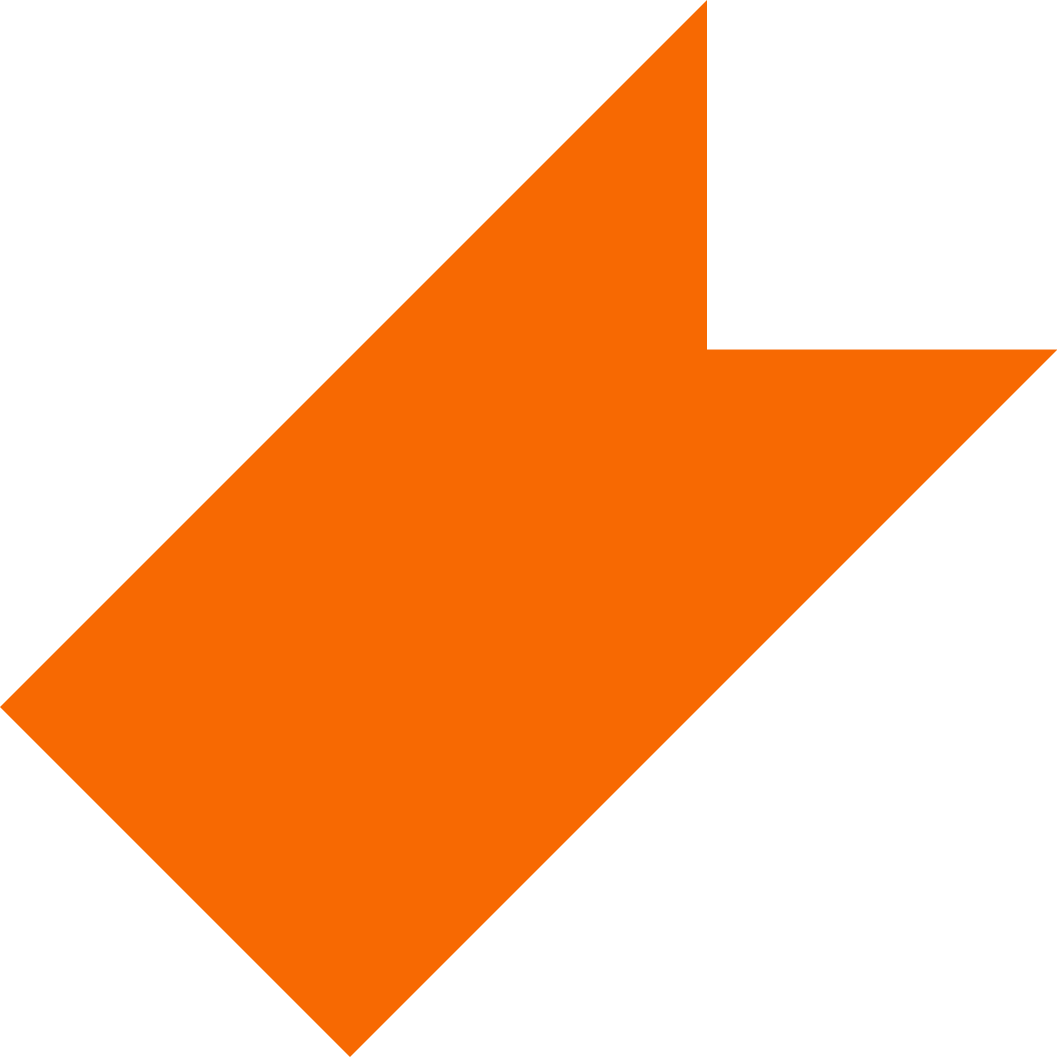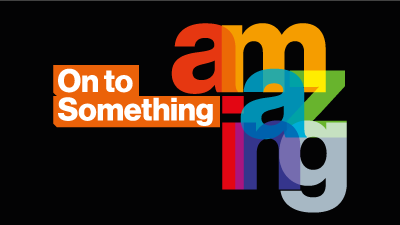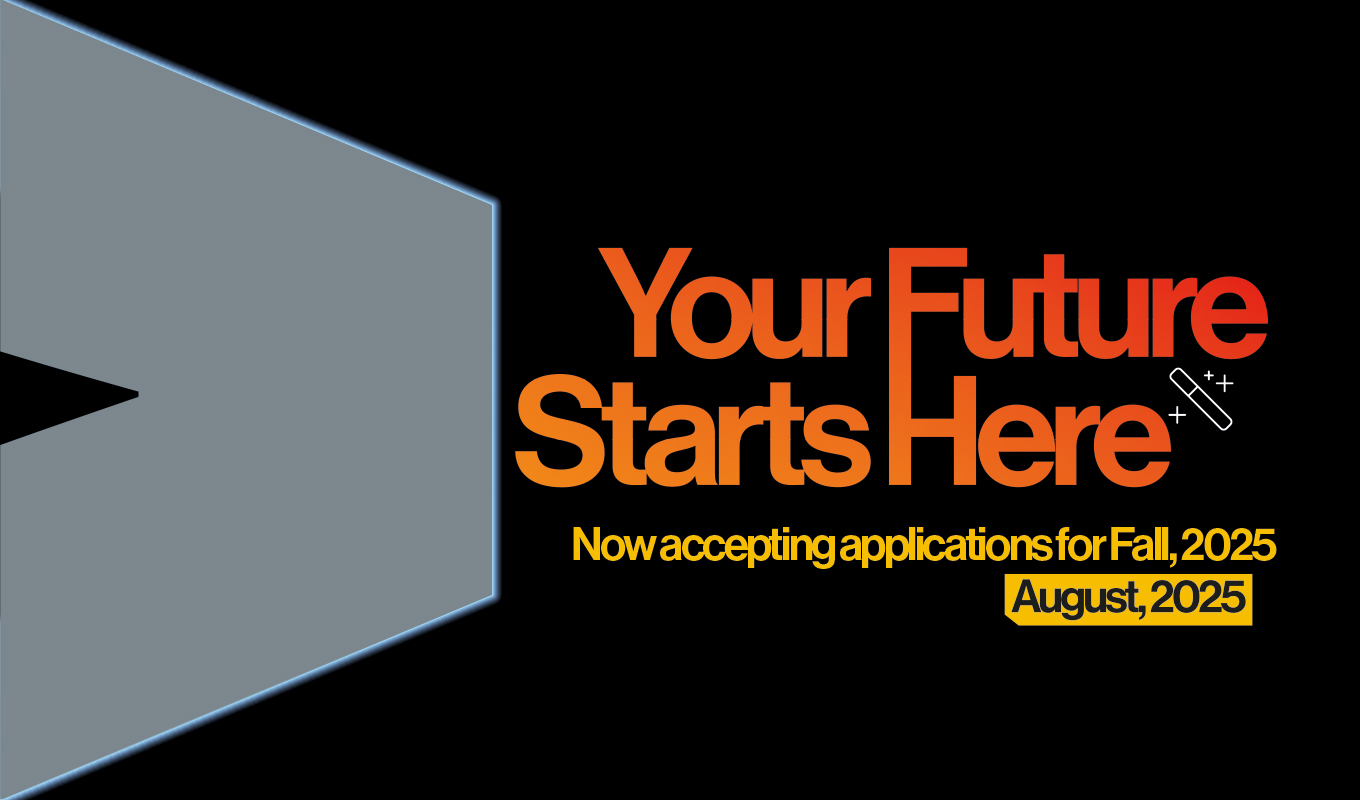Bachelor of Fine Arts in New Media Design


New Media Design
Bachelor of Fine Arts Degree
- RIT/
- RIT Dubai/
- Academics and Learning/
- Undergraduate Degrees/
- Bachelor of Fine Arts in New Media Design
Accredited by the UAE Ministry of Education
At the intersection of visual communication, design strategy, and user experience design, RIT’s new media design major produces innovative creators of next gen digital media.
Overview
Every day, millions of people engage in interactive digital experiences, from smartphones and smart TVs, to tablets, wearables, gaming systems, and more. In the new media design degree, you’ll explore dynamic aspects of digital design–visual design, user experience design, interaction, motion graphics, and technology–that give you the skills you need to create captivating, interactive media.
Aerospace
Automotive
Electronic and Computer Hardware
Manufacturing
Medical Devices
Transportation and Logistics
Renewable Energy
Program Goals
The BFA in New Media Design program goals are broad statements that describe what graduates are expected to attain within a few years of graduation. The New Media Design faculty, in conjunction with its constituents, have established the following program goals:
- Future-oriented skills aims to elevate the technological proficiency of students by refining specific technical competencies, digital media design, and artificial intelligence utilization. These competencies are pivotal in preparing students for the ever-evolving demands of contemporary media landscapes.
- Creativity and productivity with the New Media Design context equipping students with professional methodologies and enabling them to adeptly transform their written content into suitable formats for consumption within the New Media Design environment.
- Community activist through the practical application of New Media Design tools and strategies, students will be motivated to interact with and contribute to discussions surrounding these multifaceted issues. This approach underscores the program's commitment to nurturing informed and socially conscious individuals.
Program Learning Outcomes
What students are expected to know and be able to do by the time of graduation. These relate to the skills, knowledge, and behaviors that students acquire in their matriculation through the program. All Course Learning Outcomes of all BFA in New Media Design courses map directly into these Program Learning Outcomes.
- Organize and display information and multimedia content using research and interaction design principles.
- Develop skills and an understanding of processes to solve communication problems through the creation of digital imagery and design.
- Identify and analyze the digital communications industry, best practices, and individual roles within these collaborative workspaces.
- Apply formal design theory, methodology, and practice through the examination of contemporary and historical design.
- Provide experiential opportunities for innovative multi-disciplinary team-based collaboration.
Curriculum
Typical Course Sequence
Total Credit Hours - 122
| Course | Sem. Cr. Hrs. | |
|---|---|---|
| First Year | ||
| NMDE-103 |
New Media Design Interactive I
|
3 |
This course provides an introduction to key internet, web and multimedia technologies. Topics covered include computer-based communication and information, basic HTML, Adobe Flash and WYSIWYG editors, basic internet applications such as FTP, basic use of digital images, audio and video techniques, web page design, web animation for development and publishing. | ||
| FDTN-111 |
Drawing I
|
3 |
This course is an introduction to the visualization of form, thought, and expression through the drawing process and is the first of two sequential courses that are the foundation of the drawing curriculum in the College of Art and Design. Concepts are introduced by lectures, discussions, and demonstrations which are designed to provide a broad introductory experience. Students will experiment with a wide variety of media, tools, techniques and subjects to develop drawing and problem-solving skills related to form and composition. The focus of the course is to provide awareness of the full range of ways in which drawing is used as a tool for both self-expression and communication. | ||
| FDTN-121 | 2D Design I | 3 |
| FDTN-141 | 4D Design | 3 |
| NMDE-111 | New Media Design Digital Survey I | 3 |
| NMDE-112 | New Media Design Digital Survey II | 3 |
| YOPS-10 | RIT 365: RIT Connections | 0 |
| Choose one of the following: | 3 | |
| FDTN-112 | Drawing II | |
| FDTN-212 | Drawing II Workshop: Topics | |
| Choose one of the following: | 3 | |
| General Education – Natural Science Inquiry Perspective | ||
| General Education – Scientific Principles Perspective | ||
| General Education – Mathematical Perspective A or B | ||
| General Education – Ethical Perspective | 3 | |
| General Education – First-Year Writing (WI) | 3 | |
| Second Year | ||
| IGME-101 |
New Media Interactive Design and Algorithmic Problem Solving I
|
4 |
This course provides students with an introduction to problem solving, abstraction, and algorithmic thinking that is relevant across the field of new media. Students are introduced to object-oriented design methodologies through the creation of event-driven, media-intensive applications. Students will explore the development of software through the use of a range of algorithmic concepts related to the creation of applications by writing classes that employ the fundamental structures of computing, such as conditionals, loops, variables, data types, functions, and parameters. There is an early emphasis on object oriented concepts and design. | ||
| IGME-102 |
New Media Interactive Design and Algorithmic Problem Solving II
|
4 |
This course provides students a continued introduction to problem solving, abstraction, and algorithmic thinking that is relevant across the field of new media. As the second course in programming for new media students, this course continues an object-oriented approach to programming for creative practice. Topics will include re-usability, data structures, rich media types, event-driven programming, loaders, XML, object design, and inheritance. Emphasis is placed on the development of problem-solving skills as students develop moderately complex applications. | ||
| NMDE-201 |
New Media Design Elements II
|
3 |
Information design for static, dynamic and interactive multimedia integrates content with visual indicators. Legibility and clear communication of information and direction is important to the success of any user interface design. This course integrates imagery, type, icons, actions, color, visual hierarchy, and information architecture as a foundation to design successful interactive experiences. | ||
| NMDE-202 |
New Media Design 3D
|
3 |
A comprehensive course in visualization that extends previous experience and skills to include three-dimensional creation and design. The course will provide studies in 3D modeling, rendering and animation for use in virtual spaces, rich internet and mobile applications as well as motion graphic design. Digital 3D tools will be used for solving visual design and communication problems. Students will be expected to show evidence of growth in 3D asset creation and usage in the form of simple product renderings, interactive integration and story based animation. | ||
| NMDE-203 |
New Media Design Interactive II
|
3 |
This course extends previous interactive design and development experience and skills to emphasize interactive design principles and development. The emphasis in this course will be on the creative process of planning and implementing an interactive project across multiple platforms. Students will concentrate on information architecture, interactive design, conceptual creation, digital assets, visual design and programming for interactions. | ||
| NMDE-204 |
New Media Design Animation
|
3 |
This project-based course provides training and practical experience in producing two- and three-dimensional animated sequences using off the shelf multimedia software. Students produce a number of short exercises incorporating original computer and non-digital artwork. Topics include key frame and tweening, cycling, acceleration, squash and stretch, backgrounds, inking, rotoscoping, sound, masking, multi-plane effects and space-to-time. Screenings of professionally made films will illustrate and provide historical perspective. | ||
| ARTH-### | Any 100-level ARTH course (General Education-Artistic Perspective) | 3 |
| ARTH-### | Any 100-level ARTH course (General Education-Global Perspective) | 3 |
| CAD Studio Elective‡ | 3 | |
| General Education – Social Perspective | 3 | |
| Third Year | ||
| NMDE-301 |
New Media Design Elements III (WI-PR)
|
3 |
This course focuses on advanced visual communication within the current new media design profession. Through formal studies and perceptual understanding, including aesthetics, graphic form and structure, concept development and visual organization methods, students will design sophisticated solutions to communication problems. This course integrates imagery, typography, icons, user interface design, content creation and information architecture in order to design successful static, motion and interactive experiences. | ||
| NMDE-302 |
New Media Design Graphical User Interface
|
3 |
This course examines the user-centered and iterative design approaches to application and interactive development with a focus on interface design, testing and development across multiple devices. Students will research and investigate human factors, visual metaphors and prototype development to create effective and cutting edge user interfaces. | ||
| NMDE-303 |
New Media Design Interactive III
|
3 |
A study of the application of information design theory and practice to the developing area of new media. Cartography and iconography will be viewed in the context of web and kiosk use. The delivery of consumer information, using interactive and dynamic media as the vehicle, will be investigated. | ||
| NMDE-305 |
New Media Design Motion Graphics
|
3 |
This course will deal with design concepts related to moving type. The impact of type as it moves, rotates, explodes, scales and fades will be considered. Legibility of the message will be studied in relation to delivery methods. Additional compositing, three-dimensional, camera tracking and special techniques and effects will be introduced during the class. | ||
| Art History Electives± | 6 | |
| Open Electives | 6 | |
| General Education – Immersion 1 (WI) | 3 | |
| Professional Electives § | 3 | |
| Fourth Year | ||
| NMDE-401 |
New Media Design Capstone I
|
3 |
This course will focus on individual career preparation through topics such as resume development, job research, interviewing best practices, and creating or refining an online portfolio. Additional exploration and overviews will include the business aspects, practices, and workflows of the new media industry with a focus on designer/developer/client relationships. Students will integrate project workflows, management, team building, concept generation and prototyping through small team projects, and project research for NMD Capstone II. | ||
| NMDE-404 |
New Media Design Interactive IV
|
3 |
Students will create innovative interactive product promotions and installations. The projects created in the class will embrace new technology and will focus on innovative solutions for real world design problems. An emphasis will be placed on researching new technology and using it in conjunction with solid interactive design skills to create innovative projects. | ||
| NMDE-406 |
New Media Design Experimental
|
3 |
This project-based course affords the student the ability to apply an experimental approach to integrating digitally generated content with new media techniques and processes in new, imaginative ways. Students will be encouraged to approach the computer as a medium of creativity to explore issues of narrative, identity, place, and visual reality vs. digital reality. Students will exhibit completed projects in a virtual or public forum. This course is topic based and can be taken multiple times for credit. Students can enroll in multiple topics during the same semester. Specific topics can only be taken once. The topics will include advanced concepts in 3D, UX, digital art and interaction design. | ||
| NMDE-411 |
New Media Design Capstone II
|
3 |
This course will engage the New Media Design and related majors in a capstone production experience. The instructor will form collaborative student teams that will design, plan, prototype, and implement new media projects. Student teams will test their product with users and provide written feedback and analysis. Students will be evaluated on individual contributions and their team’s final capstone project. | ||
| General Education – Immersion 2, 3 | 6 | |
| General Education – Elective | 3 | |
| Open Electives | 9 | |
Please see the General Education Curriculum (GE) for more information.
(WI) Refers to a writing intensive course within the major.
† Art History electives are non-studio courses searchable in SIS with the Art History attribute of ARTH; and are 200 level or above.
‡ CAD Studio Elective courses are any College of Art and Design course with a studio or lab component, per catalog restrictions.
§ Professional Elective courses are any course offered by the following disciplines: GRDE, IGME, ISTE, IDDE, DDDD, SOFA, or photography (PHAP, PHAR, PHFA, PHPJ, PHVM, PHPS).
Click here for the program flowchart.
To graduate, students need to complete all the requirements as listed in the curriculum graduation policy
Program Related News
-
June 19, 2024
![A designer is working on UI/UX]()
RIT Dubai to launch Bachelor of Fine Arts in New Media Design
Rochester Institute of Technology (RIT) of Dubai is set to launch a new undergraduate degree programme that will prepare students for work in the rapidly evolving fields of new media, interactive design, and mobile applications. The Bachelor of Fine Arts in New Media Design will be open to applicants looking to combine technology and creativity, to take them to the forefront of future digital communications.










